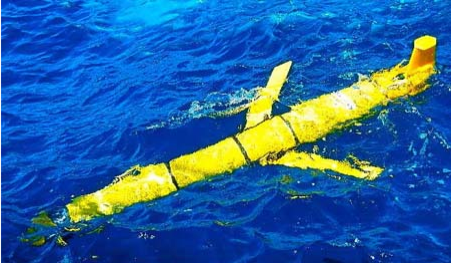Underwater 'Glider' Robots Aid Quest For Better Hurricane Predictions

Not all storm chasers are men in large vehicles careening down tornado-filled highways. Some, in fact, are underwater robots that gulp down water and spew it out again to fuel their path through the ocean. Such “gliders” are key to compiling better hurricane forecasts, according to the U.S. National Oceanic and Atmospheric Administration.
On Thursday, NOAA announced it is putting 15 gliders out to sea off coasts from Georgia to Nova Scotia. The gliders can operate autonomously for up to eight weeks during the Atlantic storm season in the fall. On their voyages, the gliders will make observations on ocean temperature, salinity, ocean currents and the sounds of fish and sea mammal migrations. Rutgers University researchers are managing the gliders themselves, but the data will be shared with NOAA, the U.S. Navy and others.
“When storms are moving along our coasts, lives depend on accurate forecasts,” Zdenka Willis, program director of the NOAA-led U.S. Integration Ocean Observing System, said in a statement. “Unmanned gliders sample the ocean in places where it is impractical to send people, and at a fraction of the cost, allowing us to collect data even in the middle of a storm. This information ultimately helps improve forecast precision so that decision makers can keep people safe.”
Given that NOAA has access to state-of-the art satellites, why would it need another pair of eyes at sea level? Satellites, it turns out, can’t see through clouds. So during bad weather, it’s just about impossible to directly measure sea surface temperature from space. Energy at the surface of the ocean is what fuels a hurricane, so being able to directly measure sea surface temperature means scientists can more accurately predict how strong a storm might be – and how much destruction it could wreak.
"What's the difference in billions of dollars between the damage caused by a Category 4 and a Category 5 storm? 50? 100?" Wood Hole Oceanographic Institution researcher Lou St. Laurent asked New Scientist. Knowing the estimated magnitude of an approaching hurricane would help shape the response and evacuation plans developed by city officials. But it would be foolhardy to ask a crew of human sailors to risk death by sailing into the storm.
"Gliders are the only way of having an oceanographic presence during a hurricane," St. Laurent says.
During this hurricane season, the underwater robots will have a little help from their colleagues in the air. For the past few years, NASA scientists have been flying the Global Hawk, a massive unmanned drone, over developing Atlantic storms. Because the remotely piloted drone can keep flying for more than 24 hours, it’s an extremely useful tool to keep tabs on hurricanes throughout their lifespan. This year, NASA has been using the Global Hawk to investigate the Saharan Air Layer, a dry, hot air mass that blows off the Sahara every few days.
© Copyright IBTimes 2024. All rights reserved.





















